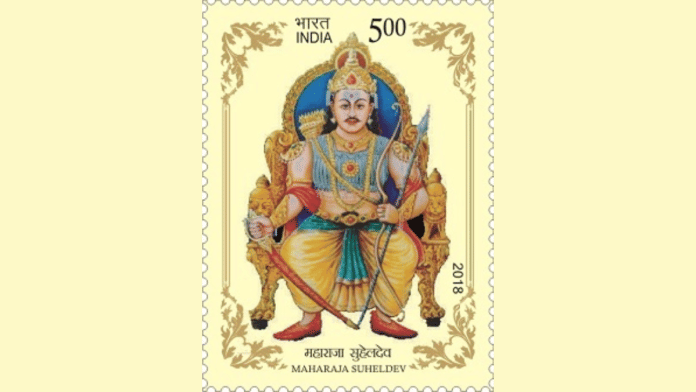Thank you dear subscribers, we are overwhelmed with your response.
Your Turn is a unique section from ThePrint featuring points of view from its subscribers. If you are a subscriber, have a point of view, please send it to us. If not, do subscribe here: https://theprint.in/subscribe/
History is often written by the victors—or by those who lived to tell their side of the story. But what happens when the victors leave behind no grand chronicles, no elaborate monuments? They fade into obscurity, remembered only in local folklore. One such forgotten chapter is the Battle of Bahraich (1033 CE), where Raja Suheldev of Shravasti crushed the invading army of Ghazi Sayyad Salar Masud, the ambitious nephew of Mahmud of Ghazni.
A battle that should have been a turning point in Indian history barely finds mention in textbooks. Instead, the invader’s tomb became a shrine, while the hero who defended the land was left to be remembered only in folk songs.
A King Who United India Against an Invasion
The early 11th century saw relentless raids by Mahmud of Ghazni. While he plundered temples and cities, his nephew, Salar Masud, had bigger ambitions—to establish permanent Ghaznavid rule deep inside India. At just 16, Masud led an army of 100,000 men, conquering Punjab, Delhi, and Kannauj before setting his sights on Awadh (Uttar Pradesh).
But Masud underestimated India’s resistance. Raja Suheldev of Shravasti, a warrior king, saw through his expansionist designs. Unlike previous fragmented responses, Suheldev united a confederation of 21 kings—one of the earliest recorded instances of Indian unity against foreign invasion. His coalition included warriors from Rajput, Bhar, and Pasi clans, all prepared to defend their homeland.
The Decisive Battle at Bahraich
The final battle took place near Chittaura Lake, Bahraich. Overconfident after months of victories, Masud set up camp near a sacred site, planning to build a mosque. But Suheldev was waiting. At dawn, his army launched a ferocious and coordinated attack, taking Masud’s forces by surprise.
The Mirat-i-Masudi, a later Persian chronicle, describes the battle as a slaughter, where Suheldev’s warriors “mowed down Masud’s army like grass.” By afternoon, Masud was struck down—either by an arrow or in direct combat with Suheldev. His forces were annihilated—none survived. It was not just a victory; it was a statement—India would not fall so easily.
Why Did History Forget This Victory?
Despite its immense significance, the Battle of Bahraich is almost absent from mainstream history. The reasons are many. Indian rulers rarely documented their victories, unlike the detailed chronicles kept by invaders. The Ghaznavid Empire, ashamed of the crushing defeat, omitted Masud’s fate from their records.
Later, colonial historians focused on India’s defeats, ignoring battles like Bahraich where Indians successfully repelled invaders. Instead, Masud’s tomb in Bahraich became a shrine, and over centuries, he was venerated as a martyr (Ghazi Miyan), while Suheldev was forgotten. The irony is glaring—India has often memorialized its invaders more than its defenders.
The Legacy of Suheldev: A King Without a Monument
Unlike legends such as Maharana Pratap, Shivaji, or Prithviraj Chauhan, Raja Suheldev received no grand historical recognition. Yet, his victory ensured that North India remained free from Islamic rule for over a century—a fact rarely acknowledged. His name survived only in oral traditions, passed down through songs and local folklore, rather than in official history books.
Today, efforts are being made to resurrect his legacy. Statues and memorials are being built, and Suheldev’s contributions are finally being acknowledged. But it raises an important question—why did it take a thousand years to honor one of India’s greatest victories?
History Must Remember the Defenders
The Battle of Bahraich was more than just a military triumph—it was a defining moment of Indian unity. It showed that when Indian rulers stood together, they were invincible. And yet, like many great warriors who defended this land, Raja Suheldev remains overshadowed by the very forces he defeated.
History has a strange way of glorifying the conquerors while forgetting the defenders. But the time has come to rewrite the narrative. Raja Suheldev was not just a king—he was a symbol of India’s resilience. His victory at Bahraich deserves its place in India’s grand historical narrative—not as a footnote, but as a chapter of pride and honor.
Let history remember not just those who invaded, but those who defended
These pieces are being published as they have been received – they have not been edited/fact-checked by ThePrint.


